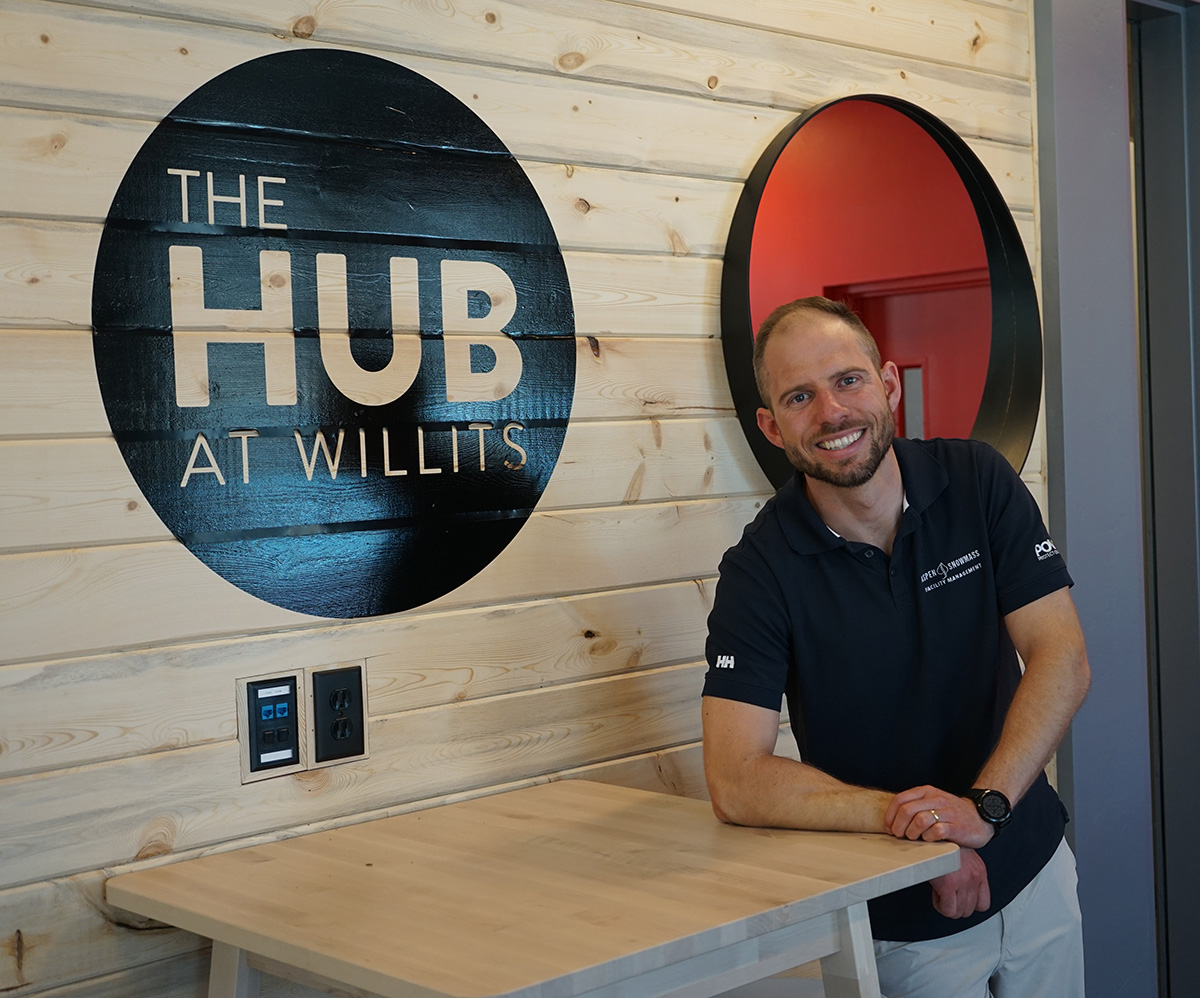We’re featuring our partners who help contribute to HCE’s carbon reduction goals and are leaders in the areas of sustainability and climate action. We recently chatted with Ryland French, Director of Facility Operations and Energy at Aspen Skiing Company (SkiCo), about The Hub at Willits, a new 43-unit, all-electric housing complex. The complex will serve employees of Aspen Skiing Company, as well as units that are voluntarily deed-restricted for mid-valley childcare professionals.
What is SkiCo doing to make Climate Action a priority?
Our broad approach is advocacy. Using our position in the community, the skiing industry, and the business world-at-large, we encourage other businesses, and particularly government bodies, to do what’s necessary to make the most impactful changes we need to stop the worst effects of climate change. The Hub serves as an example that others can follow.
About two years ago, the design team discussed our sustainability goals and aspirations for The Hub. There was an assumption that we would do the heating with natural gas, build a great building envelope and potentially do some solar.
As a team, we started to discuss more broadly the possibility of the building being 100% electric without a natural gas line even going into it. We also wanted to “walk our talk” when taking bold steps towards climate action.

Ryland French, Director of Facility Operations and Energy at Aspen Skiing Company (SkiCo)

At a glance:
-
100% Electric Building (no natural gas line)
-
30% energy use produced by onsite solar
-
Space heating and cooling heat pumps
-
Domestic hot water heat pumps
Tell us about some of the challenges faced during construction?
One of the biggest challenges we faced was the financing component coming together.
The initial reaction was that it was impossible or not justifiable to go 100% electric from a cost standpoint. Then it was, “Is this feasible?” Questions like “do we have heat pumps that will perform here and be reliable?” and “can we source them, and can we find a contractor who knows what they’re doing to install them?”
It’s a testament to everyone on the team that the conversation didn’t just end there. It sparked a discussion that turned into a very dynamic and committed process, making connections in the industry with manufacturers and distributors of these high-efficiency products. We found that, yes, heat pumps do work in cold climates.
We also brought in a consultant and worked with our general contractor, who put the dollar figures to the energy figures so we could make informed decisions. CORE helped us see what options were out there and acted as an energy advisor for us. We also received a CORE Innovation Grant and rebates from HCE to help make this project a reality.
What are your future goals around building sustainability?
The first step is operating this building correctly and commissioning it to make sure it runs effectively and efficiently. The next step is to replicate this in our current facilities by retrofitting them when it makes sense and using the technology and lessons learned on future buildings. The building industry is still very much in a transition to electricity, and not every building is the same. Using natural gas would have been a commitment to using fossil fuels for the next 50 years, which we want to avoid. Using electricity, as Holy Cross Energy’s portfolio of renewable power gets cleaner, so do we. When Holy Cross Energy reaches its own goal of 100 percent carbon-free power by 2030, so do we. It’s just going to keep getter better over time.
How can HCE members collectively support one another in our renewable energy goals?
Members need to take an active role in their electric co-op. The goals that we see Holy Cross building on over the next several years are, in part, a result of the members saying they wanted more renewable energy. This project is an example of the impact of those goals. The replication of projects like this will hopefully inspire other projects in the future.

No Comments
Sorry, the comment form is closed at this time.